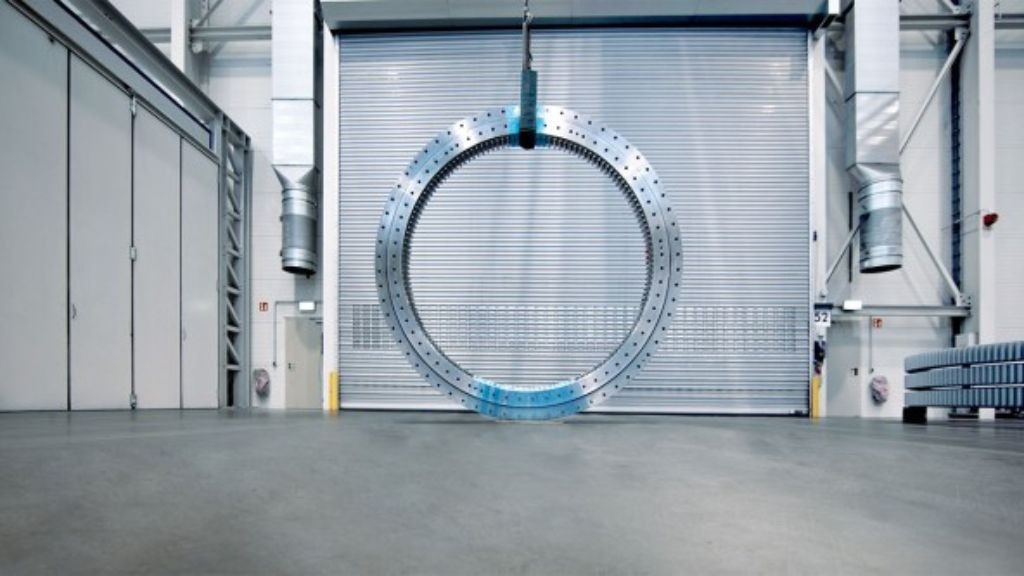How Liebherr is helping astronomers explore the universe
Liebherr provides components for next-generation Very Large Array radio astronomy facility

Humanity has always been captivated by the stars, driven by an insatiable curiosity to understand the universe and our place within it. From ancient astronomers charting celestial paths with the naked eye to modern scientists employing sophisticated technologies, the quest to see, map, and understand the cosmos has accelerated our progress and expanded possibilities on Earth.
Today, at the forefront of astrophysical research, driven by remarkable scientific breakthroughs, the development of the next-generation Very Large Array antennas (ngVLA) is taking shape. With assistance from Liebherr, the antennas were developed by mtex antenna technology for the largest radio astronomy facility in the Northern Hemisphere, the National Radio Astronomy Observatory (NRAO).
"The ultra-sensitive imaging capabilities of these groundbreaking instruments will give us an unprecedented look into space and help unlock the secrets of the universe," explains Lutz Stenvers, managing director of mtex antenna technology GmbH. The new generation antennas, featuring a diameter of roughly 60 feet (18 metres), will be positioned in a clearly defined pattern. The area, with a total of 244 antennas, will cover approximately 620 miles. The special arrangement of the antennas will ensure optimal data reception from the cosmos.
The synergy of three elements
For the operation of an ngVLA, there are some necessary components that need to be installed — a slewing bearing, two gear ring segments, and azimuth drives. The slewing bearing is used for azimuth adjustment of the antenna to enable its precise positioning. This roller bearing has a diameter of approximately 11 feet (3.3 metres). Its weight of 9,100 pounds (4,128 kilograms) provides more stability. Also, its axial runout of 0.1 millimetres and radial runout of 0.05 millimetres play an important role when it comes to precision. The slewing bearing is designed to be free of backlash, making it ideal for adjusting the azimuth of the antenna.
As a complimentary feature to the slewing bearing, the gear ring segment is of great importance for the elevation adjustment of the antenna, meeting the high demands on the gear quality. The two gear ring segments, each positioned on the sides of the horizontal antenna rotation axis, ensure its exact elevation adjustment.
In addition, the interaction of the azimuth drives with the slewing bearing enables a high degree of precision, with which the satellite systems rotate around the tower axis. The key to this precision is a low torsional backlash and increased stiffness of the planetary gears. These optimizations make the adjustment mechanism of the entire system operate with maximum accuracy, targeting precise positioning in the long run.
The elevation adjustment, which is responsible for the inclination of satellite dishes, uses the same drives as the azimuth adjustment, but with an adapted transmission ratio. The interplay of the two adjustment systems is indispensable for exact antenna alignment.
Rigorous testing is necessary for success in astronomy
Prior to market introduction, Liebherr subjected the prototypes to comprehensive testing, including stiffness tests for the azimuth and elevation drives to meet or exceed industry standards. The expertise built up over decades is crucial for the execution of the slewing bearing, gear rings, and slewing drives as a unit.
With a commitment to set forth precision engineering and innovation, Liebherr and mtex antenna technology shape the future of satellite systems and push forward satellite positioning technology.
"Cutting-edge technology, precision engineering, and a tireless commitment to scientific discovery, rockets the project to the forefront of astrophysical research," continues Lutz Stenvers, "and Liebherr's components take over an important role in this."
Company info
1015 Sutton Drive
Burlington, ON
CA, L7L 5Z8
Website:
liebherr.com/en/can/about-liebherr/liebherr-worldwide/canada/liebherr-in-canada.html



